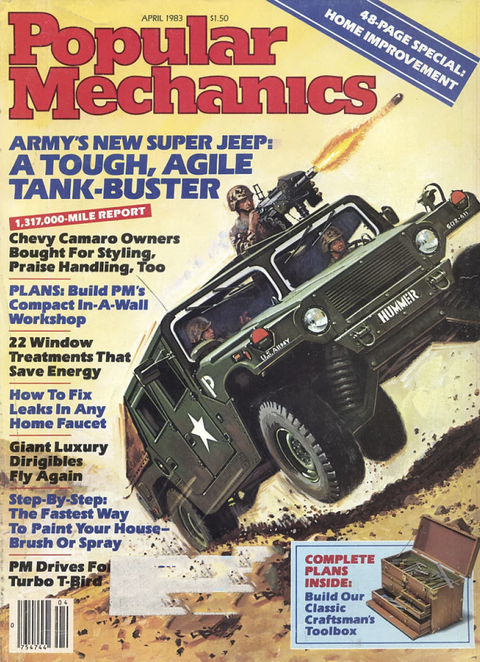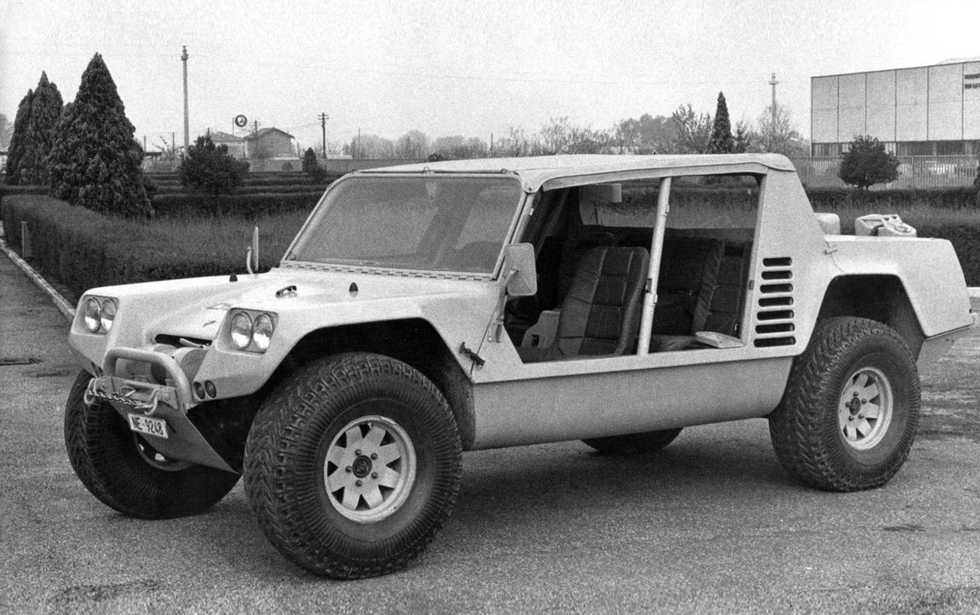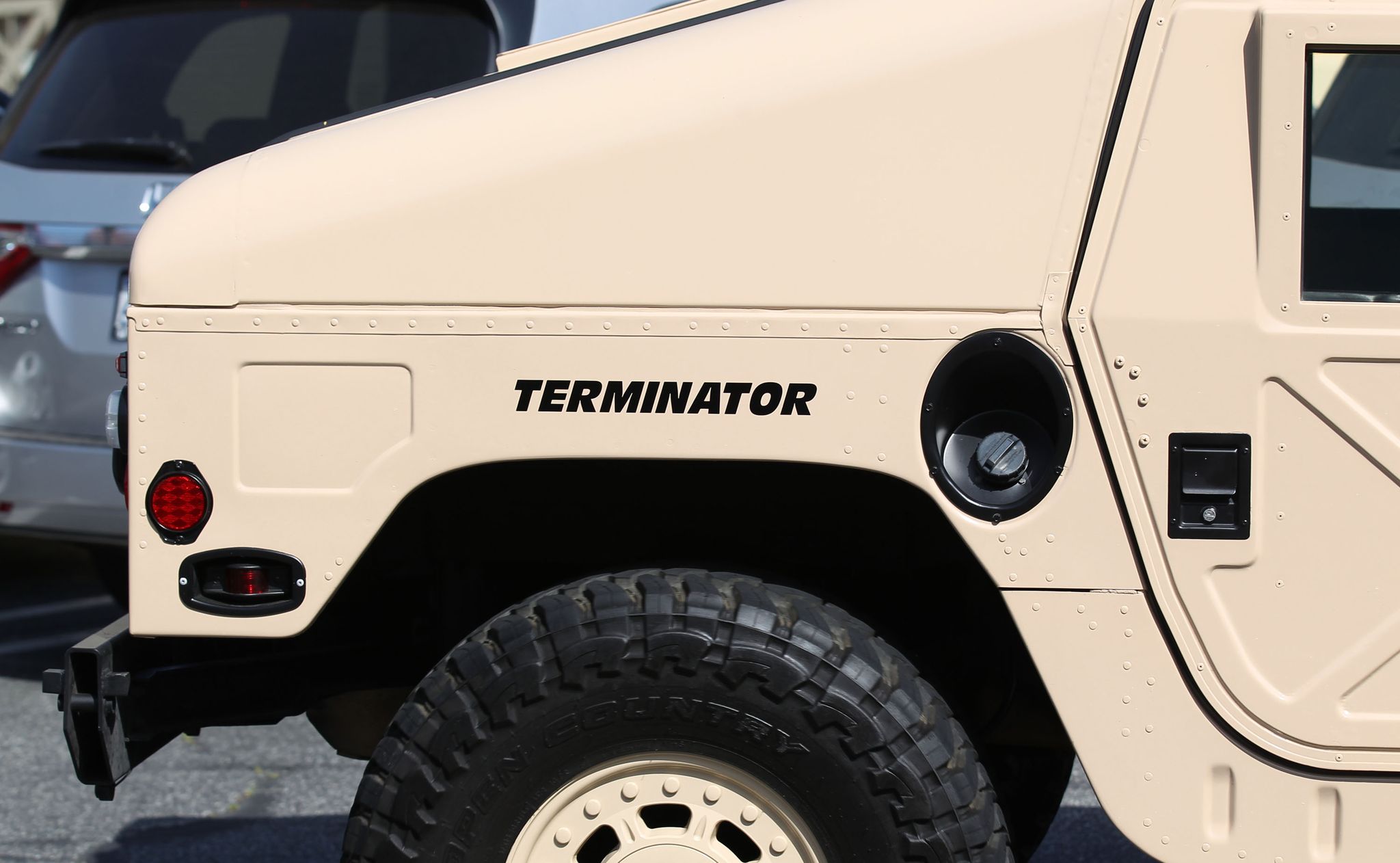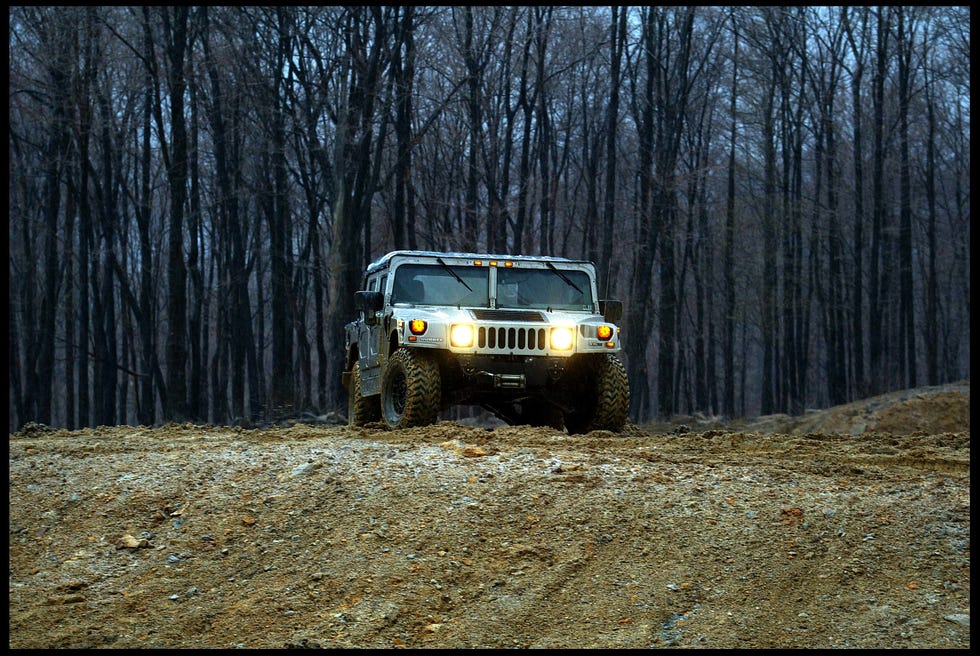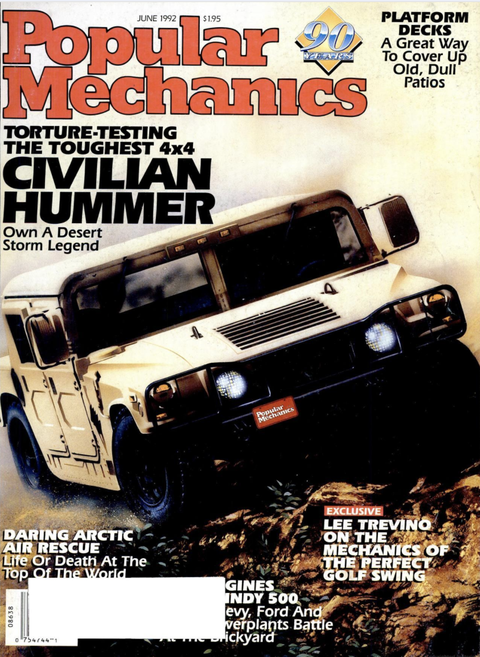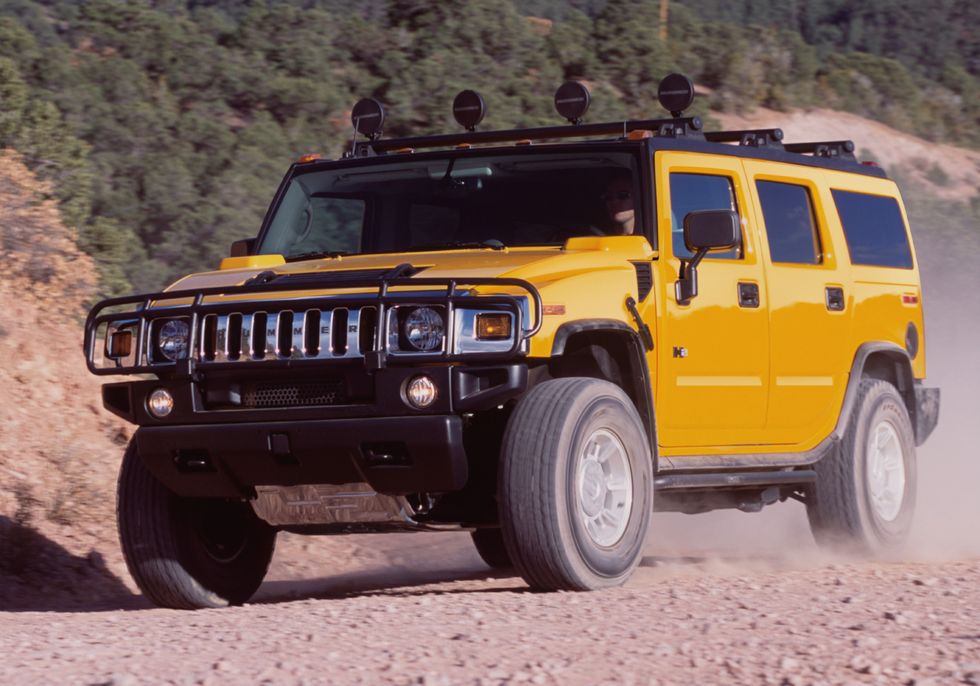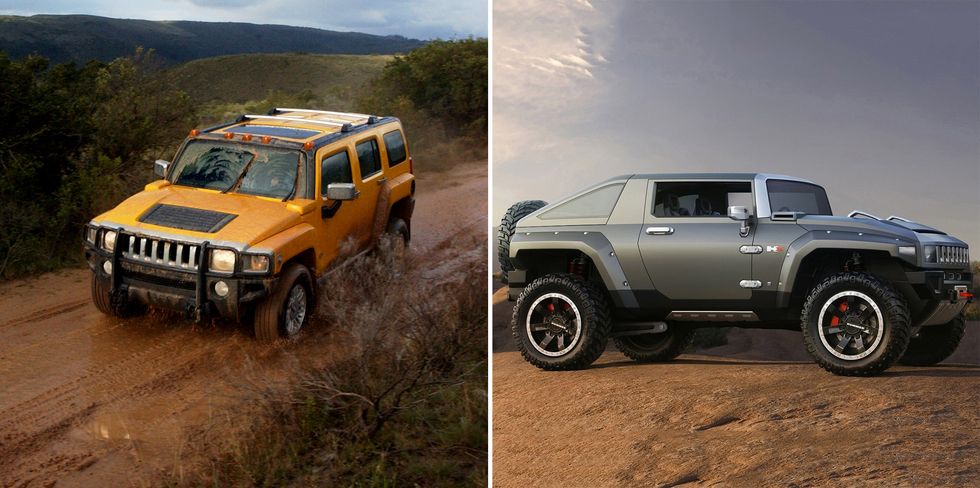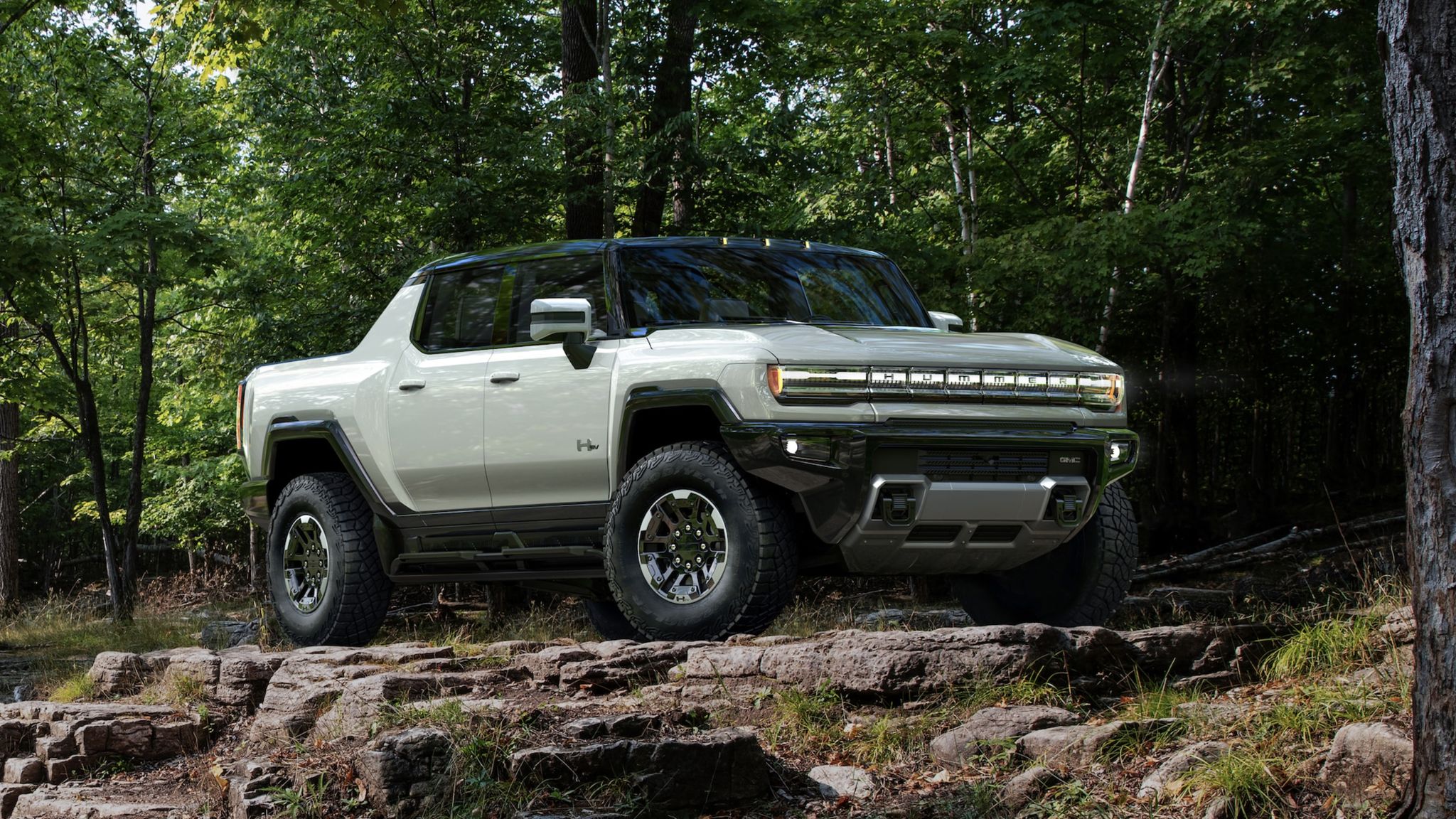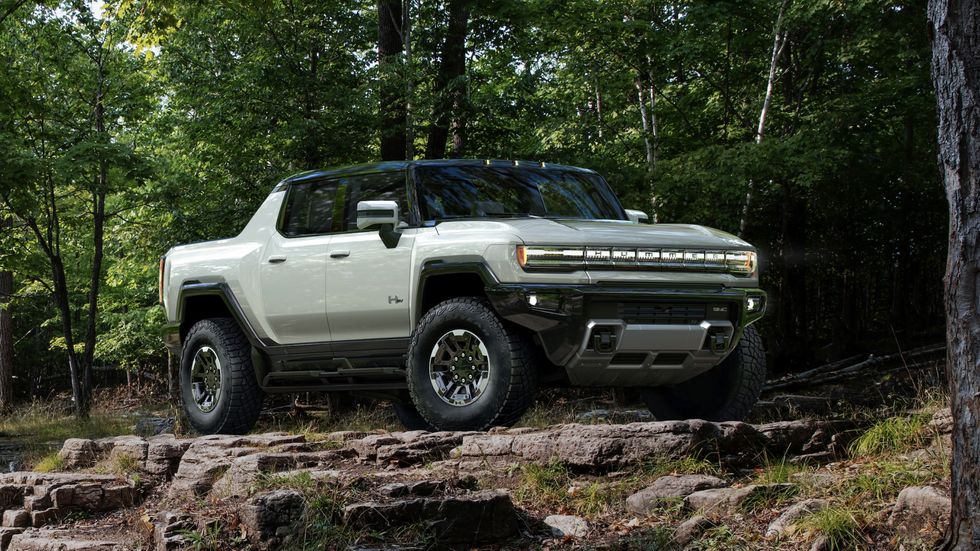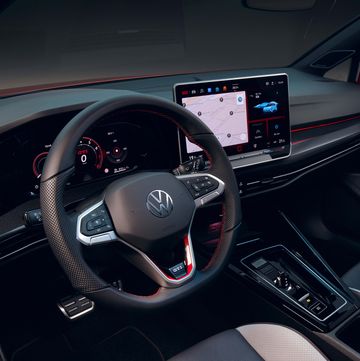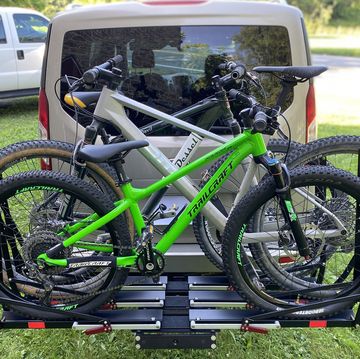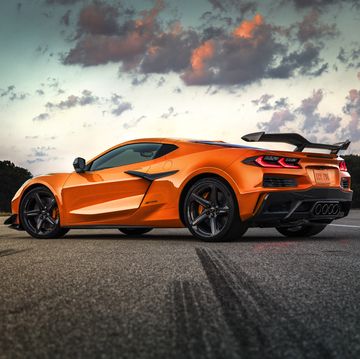It was a machine built for war. Its entire life had only known the dusty roads of the Middle East. A beast on four wheels, it was responsible for the lives of its camouflaged human cargo packed inside. It did its job well, almost too well.
It wasn't meant for a civilian life, but it was coming to America's streets anyway and would become the most awe-inspiring—and the most controversial—SUV ever made. Its ecological sins would ultimately lead to its demise, but a major automotive revolution would resurrect it as something else entirely.
This is the story of the Hummer.
Military Spec
By the late 1970s, the U.S. military needed to replace its traditional jeeps and its other light tactical vehicles with a new breed of machine that could do it all. And in 1979, the Army came up with specs for something bigger—much bigger—than Willys Overland’s original machine.
Called the High Mobility Multi-Purpose Wheeled Vehicle (HMMWV or simply Humvee), the proposal would kickstart a competition for the military’s next do-anything workhorse. The preliminary design work began that year with the first engineering prototype vehicle completed by July 1980. Two years later, AM General delivered 11 prototypes to the Army in competition with other prototypes from General Dynamics and Teledyne.
AM General would be the eventual winner with the Pentagon selecting its prototype in March 1983. Playing with the HMMWV moniker, AM General called its muscle-y beast a “Hummer.” The Pentagon was so impressed, they decided to snatch up 55,000 of them immediately.
AM General’s creation was a true, do-anything vehicle—just what the U.S. military had ordered. The Humvee could clear a 16-inch obstacle under its lowest point, tackle a 5-foot deep body of water (with the proper fording kit), and traverse side slopes that would make traditional 4X4s topple over. And the Humvee could do all this while carrying a tremendous 2,500-pound payload.
The HMMWV Was Almost...A Lambo?
AM General wasn’t the only company eyeing a lucrative U.S. military contract in the late 1970s. Lamborghini wanted a piece of the action, but instead of doing all the heavy lifting itself, the Italian supercar builder farmed out some of the tech for a light tactical vehicle to Mobility Technology International (MTI) in San Jose, California.
The vehicle, known as the Lamborghini Cheetah, was up for the same contract as the Humvee. It shared a similar look as well as a four-wheeled independent suspension. Its design was right out of a G.I. Joe toy commercial. But instead of a ferocious Lamborghini V12, the two-wheel drive Cheetah used a 180 hp 5.9-liter Chrysler V8 mounted in the rear (like a classic dune buggy) and mated it to a three-speed automatic.
Lamborghini exhibited the Cheetah proudly at the 1977 Geneva Motor Show. But financial and legal troubles—for both MTI and Lamborghini—doomed the Cheetah. Why? Well, they allegedly borrowed design elements from an earlier military prototype, the 1972 FMC XR311.
Lamborghini soon sold the Cheetah prototype to Michigan-based military contractor Teledyne. Teledyne reportedly built four more prototypes in order to continue the military bid process, but the Cheetah’s performance couldn’t match the Humvee’s capabilities. In the 1980s Lamborghini would build its own production off-roader, the LM 002, which aped some the Cheetah’s style but used a big beastly Lamborghini V12 up front and four-wheel drive.
Ten years ago, the original Cheetah prototype was located on a farm in Michigan by Lamborghini dealer Roy Cats. The Cheetah was being used as a farm run-about. Cats bought it and spent about $300,000 restoring the vehicle with input from former MTI employees.
It now lives at the Lamborghini museum in Bologna, Italy.
American soldiers loved the Humvee and called them "Jeeps on steroids," according to Time magazine—and they served as platforms that could perform nearly any task in the field.
Several Hummer variants would serve with distinction through the years as cargo and troop carriers; ambulances; and tube-launched, optically tracked, wire-guided (TOW) missile carriers. It could even tow artillery like the M119 Howitzer.
The 1990-1991 Persian Gulf War put the Humvee on center stage, and the tough, battle-hardened rigs became a vehicular symbol of America’s might.
Army Technology reported in 2014: "I think the HMMWV's iconic status resulted from its ability to reliably and consistently meet soldiers' changing needs, doing so with greater capabilities than its predecessor," explains Scott Davis, program executive officer at the U.S. Army's Combat Support and Combat Services Support, the office responsible for the Humvee.
"There were certainly skeptics when we replaced the Jeep with the HMMWV, but today you find HMMWVs on every post and in numerous partner militaries around the world."
In the 40 years since those first prototypes, AM General had built almost 300,000 Humvees.
Hummer Hits the Streets
Arnold Schwarzenegger wanted a Hummer. He wanted one badly.
The action movie megastar petitioned AM General to build a civilian version, and by July 1992, Schwarzenegger had one in his own garage with “Terminator” emblazoned on its flanks. Soon, the world would soon get its hands on the overpowered, overspec’d, overwhelming Hummer.
In the June 1992 issue, Popular Mechanics spent a day pounding the truck through AM General’s test facilities and proclaimed: “For dirty work, this warlike roughneck has no peer.”
Jeeps and other off-road vehicles at the time could only travel so far before getting stuck, and many owners of traditional 4X4s spent thousands of dollars to make them more capable. But the Hummer’s off-road ability right off the showroom floor was better than any other factory 4WD vehicle. Its huge 37-inch tall tires could conquer almost any terrain, and unlike any other 4X4 at the time, an incredible 16-inches of ground clearance due to its four-wheel independent suspension made the Hummer an off-roader’s dream come true.
What Made the Hummer Such an Off-Road Beast?
- Ground Clearance for Days—Unlike the traditional 4X4s of the 1980s, the Humvee had an independent suspension front and rear. This design combined with huge 37-inch tires gave the Humvee 16-inches of ground clearance. That’s nearly double other 4x4s at the time.
- Geared to Turn Massive Tires—The Humvee doesn’t just rely on the low range in its transfer case and normal axle gear to help the giant truck crawl over obstacles and turn the large tires. The Humvee utilizes specialized 1.92:1 geared hubs that provide an extra reduction for tractor-like crawling.
- Remarkable Off-Road Stability— The drivetrain is tucked up high in the chassis, making the Humvee as wide as an 18-wheeler. This gives Humvees a super-wide stance so the center of gravity is kept low providing extra stability off-road. AM General says it can traverse a 60 percent side slope at maximum load. But real-world off-road enthusiasts have proven it can handle even steeper sidehills.
- Race Ready Suspension—The Humvee’s durable double wishbone, independent coil-spring suspension was put to the test in off-road racing. Legendary racer Rod Hall and his sons Chad and Josh proved the mettle of the H1 by winning the stock class in the grueling Baja 1000 a whopping 11 times.
- Air-Down on the Go—To increase traction in loose, sandy, or rocky terrain, many off-roaders let some air out of their tires. This helps the tires conform to obstacles or float over loose surfaces like sand and snow. The Humvee’s Central Tire Inflation System allows the driver to release air pressure at each tire individually and then air them up later—all from the comfort of the cabin.
Priced at around $42,000, the 1992 Hummer cost the same as a top-level Mercedes-Benz 300 SEL luxury sedan. But unlike the Benz, these machines were not luxurious. AM General tried to make the Hummer palatable for consumers with a glossy exterior, nice bucket seats, a consumer-friendly gauge cluster, and carpeting with sound-deadening qualities. But at its core, the Hummer wasn’t much different than its military sibling.
“It's like putting a gorilla into a Brooks Brothers suit,” said Popular Mechanics in 1992. “He may look stylish, but he's still a gorilla, and he's not gonna let you forget it.”
Although the Hummer excellent off-road, everyday highway driving was a different story. In 1995, Car and Driver tested the original 6,766-pound Hummer. It was not only painfully slow— reaching 60 mph in about 18 seconds—but it could only manage a paltry 9 mpg.
“At 55 mph, you'll be rammed from the rear by traffic flowing 30 mph faster, although in the Hummer you won't feel the impact.”
Still, Hummer’s brazen image was undeniable and automotive giant General Motors noticed. GM saw the potential of Hummer to fill some voids in their lineup and compete head-to-head with Jeep. In 1999, AM General sold the civilian Hummer brand to GM, and continued to build the trucks in its South Bend, Indiana, assembly plant for GM alongside military Humvees.
Too Little, Too Late
Hummers were showstoppers everywhere they went—and they were fashionable. Celebrities parked them alongside Bentleys and Lamborghinis in their garages. The Hummer was a status symbol, due in part to its astonishing price tag. By the 2000 model year, a four passenger Hummer wagon had a base price of $89,410—about $20,000 more than a Range Rover.
Work began on a (slightly) smaller Hummer that was easier to drive, less expensive, and fit in a conventional parking space. But when placed outside the context of its oversized predecessor, the 2003 Hummer H2 was still massive. It was based on the Chevy Tahoe and used some heavy-duty pickup truck components for added strength. Under the hood was a big 6.0-liter V8 with over 300 hp, and it stickered at just under $50,000.
The H2 wasn’t quite as capable as the original because it was built using mostly conventional truck parts—not highly-specialized ones designed from scratch. Yet it could still handle severe off-road conditions. Four Wheeler magazine was impressed with the truck when they first had a chance to tackle a trail and said:
“On dirt, the H2 is nearly unstoppable,” said Four Wheeler magazine in 2003. “The SUV's short front overhang and nearly nonexistent rear overhang give it the incredibly steep approach and departure angles that make ascending and descending almost any obstacle an easy task.”
In 2003, GM sold 34,529 H2s in the U.S. compared to just 730 of the original H1 during the same period. The H2 was an undeniable success, and soon Hummer clubs began to sprout up around the country. But despite the popularity, the Hummer’s had one big (environmentally) dirty secret—and it was also getting attention.
Despite its smaller and lighter size compared to the H1, the H2 delivered atrocious fuel economy. The EPA rated these things at just 10 mpg city and 13 mpg on the highway, and those numbers came from the vehicle’s three-ton curb weight and box-like aerodynamics.
For many people, the Hummer became a clear symbol of automotive excess that the Earth’s climate could no longer afford.
In a 2003 New York Times, the director of the Sierra Club's global warming and energy program said “The Hummer's tagline is 'Like Nothing Else.' But it should be 'Pollutes Like Nothing Else.'” He wasn’t alone in the opinion, and columnists like businesswoman Arianna Huffington soon skewered GM for building trucks that were excessively thirsty. Some Hummers were even vandalized and destroyed on dealership lots in the name of protecting the environment.
Pushing through the backlash, GM created H2 SUT in 2005 with a small open-air bed about three feet long. The H2’s engine output climbed to 326 hp, in an effort to put a little pep in its acceleration step. Car and Driver recorded a 0-60 mph time of 9.6 seconds for the SUT, a reasonable number for a truck that size, but the H2 SUT still only delivered 12 mpg during that same test.
A year later, GM continued its evolution toward ever smaller Hummers with the H3. Based on the bones of the mid-size Chevrolet Colorado pickup truck, the H3 weighed about a ton less than the gargantuan H2. For many, this was the first Hummer that actually fit in the garage.
And on the trail, it was no slouch. The top Alpha models with all the off-road goodies could take on rock crawling trails like a champ. The best ones had locking differentials front and rear along with 33-inch tires and a V8. Soon, the H3T pickup truck joined the line, making the H3 in many ways the best Hummer ever made.
Still, the H3 was no Prius, achieving only 14 mpg city and 18 mpg highway—equal to many other midsize SUVs of the time. But these numbers weren’t enough shed off the the image of an irresponsible gas-guzzling machine. In 2007, J.D. Power found that the H3 was the most avoided SUV in its segment. The name Hummer had become synonymous with irresponsible automotive excess.
In 2007 Hummer built the HX concept truck. It was a thinly veiled look at the Hummer H4—a truck that GM believed could finally take on the Jeep Wrangler. It was cool looking, Jeep-sized, and full of promise.
But it would not see production. The 2008 Great Recession became the last twist of the knife. A struggling GM needed to shed brands, especially ones that didn’t produce fuel-efficient vehicles for a newly cash-strapped world. After trying and failing to find a buyer for the brand, the company finally called it quits on the Hummer in 2010.
It would take a decade and a major automotive revolution to revive the three-ton behemoth.
The Hummer, Redeemed?
The idea of an electric Hummer isn’t exactly a new one.
Back in 2009, Popular Mechanics tested a plug-in hybrid (PHEV) Hummer H3 prototype built by Raser Technologies. Raser replaced the truck’s engine with a turbocharged four-cylinder GM Ecotec, which served solely as a generator for the 41 kWh battery pack. Once the truck’s battery (and 40 mile range) was depleted, the engine would fire and charge the pack.
A smart idea, but a bit too pokey off the line, which isn't surprising since the new powertrain added about 1,000 pounds to the truck’s weight. Raser’s PHEV Hummer never materialized due in part to its limited EV range.
But today, that’s no longer a concern due to incredible progress in battery development in recent years. A full-size electric pickup truck with a driving range close to that of a gasoline truck was pure fantasy back in 2010. But today? Not so much as energy density and power density of batteries—and the related electronics—have trended skyward.
In 2018, upstart Rivian showed its impressive R1T full-size electric truck at the LA Auto show with over 700 hp and up to 400 miles of electric range. One year later, the world met Tesla’s radical Cybertruck, and Bollinger’s rugged off-road pickup and SUV. The electric pickup was here, and in 2019 GM CEO Mary Barra confirmed the company would produce an electric truck in the fall of 2021.
But no one could have predicted the Hummer.
Revealed on October 20, 2020, in all its high-tech glory, the $112,594 GMC Hummer EV Edition 1 will hit roads as promised in 2021. It has 1,000 hp, can hit 60 mph in 3 seconds, and travel 350 miles on a full charge—and you can pull into a 350 kW charging station and gain 100 miles of range in just ten minutes.
The new electric full-size pickup has a five-foot bed, removable roof panels, and a fully independent suspension just like the OG Humvee. But that air suspension has a whopping 13-inches of wheel travel and is fully adjustable, lowering itself like a sport truck or raising itself like a trail monster to provide 15.9-inches of ground clearance. That, combined with the truck’s fully locking differentials and four-wheel steering, should make it the most off-road capable Hummer to ever wear the name.
Hummer EV is a wholly different vehicle than its original military predecessor—but both serve a similar purpose. The original Army Humvee stood at the forefront of off-road technology in the early 1980s, and the Hummer EV challenges expectations of what an EV can be. A truck that packs in so much forward-thinking tech could even finally convince unrepentant gas-guzzlers to go electric.
Maybe that can be a small repentance for its past ecological transgressions.

Ben is a lifelong enthusiast of anything with wheels. He has been contributing to Popular Mechanics for nearly 20 years and lives in Venice with an eclectic collection of vintage pickup trucks, muscle cars, and motorcycles scattered in various garages around SoCal.



